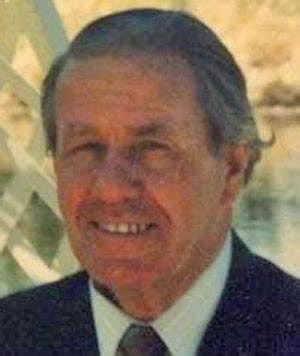Sean Twomey's quietly seismic idea
Some clouds combat global warming much better than others. Nobody’s heard of the low-key Irish scientist who pieced together why.
Other than his 2012 obituary, you’ll find almost nothing online about Sean Twomey. He enjoyed tennis, we’re told, as well sailing, horseback riding, public transportation, and classical music. Almost in passing, we’re also told that one of his long-ago papers “was a precursor to the scientific community's concern for global climate change.”
There’s no reason to suspect Sean Twomey had one of the most consequential insights in the history of climate science. There aren’t any streets named after him, no fancy scientific prizes, no statues, nothing to indicate he did anything all that memorable. The single picture of him extant on the internet is this low-resolution mess:
None of this makes any sense to me.
Because in 1974, Twomey established the intellectual foundation for the best idea anybody’s had to reverse global warming.
If we lived in a saner world, Sean Twomey would be a household name. The effect he discovered would be at the heart of a global push to hold down temperatures before we court disaster by overshooting our global temperature targets.
What did Twomey discover? Well, since the 19th century, scientists had known that clouds are droplets of liquid water condensced around an aerosol, which is a general name for any sort of particle suspended in the air. Scientists had also observed that some clouds were more effective at shielding the earth from solar radiation than others.
It was Twomey who figured out precisely why.
Twomey worked out the link between the density of the aerosols in a cloud and how much solar radiation that cloud would bounce back out to space.
Clouds made up of relatively few droplets condenscing around relatively big aerosol particles do a pretty lousy job as a heat shield, he showed.
Clouds made up of more droplets condenscing around smaller aerosol particles are much more reflective, meaning they perform much better as a heat shield for whatever is below them.
A cloud’s albedo —how reflective it is— is a function of the surface area of the droplets. More smaller droplets have a much larger surface area than fewer bigger ones. Twomey worked out the math behind these relationships in precise detail. It’s beautiful.
The way cloud albedo rises with the number of cloud condensation nuclei came to be known as the Twomey Effect. It is one of the most consequential scientific discoveries of our era. It suggests we can use clouds as highly effective planetary heat shields by doing something as simple as adding tiny salt particles to them.
Twomey’s paper laying all this out was published in 1974. This year marks its 50th anniversary.
How many fawning retrospectives about it have you read?
Crickets.
None.
For reasons that make no sense to me, the Twomey Effect is presumed to be of interest only to researchers in a recondite subfield known as Aerosol-Cloud Interaction. It’s as though only nerds locked away in a physics department basement somewhere had ever heard that E = mc2.
After Twomey wrote his groundbreaking paper, scientists grasped why clouds over land are often so much more reflective than marine clouds. When you think about it, there are lots of sources of aerosol over land: pollen, dust, human pollution. There are far fewer aerosols sources for clouds over the ocean to condensce around: mostly sea salt volatilized from the surf.
So marine clouds are often dull. And dull clouds do relatively little to cool the ocean beneath them. And the ocean is dark, which means it absorbs a lot of heat. You can see where this is going.
The first paper proposing to put the Twomey Effect at the center of an intentional program to cool the planet by brightening marine clouds dates back to 1990. The basic science remains sound, even if all sorts of practical details still need to be worked out.
For now, let’s spare a thought for Sean Twomey — a scientist’s scientist, a man who crystallized the insight that could one day save the world, then retired to enjoy his tennis, his horseback riding, his public transportation and his classical music.



Quico, wonderful!
Now, can we lay out some of the main science questions and technological developments that we need in order to implement marine cloud brightening on a wide scale? For example, what were the scientists in Alameda trying to find out before their experiment was shut down?